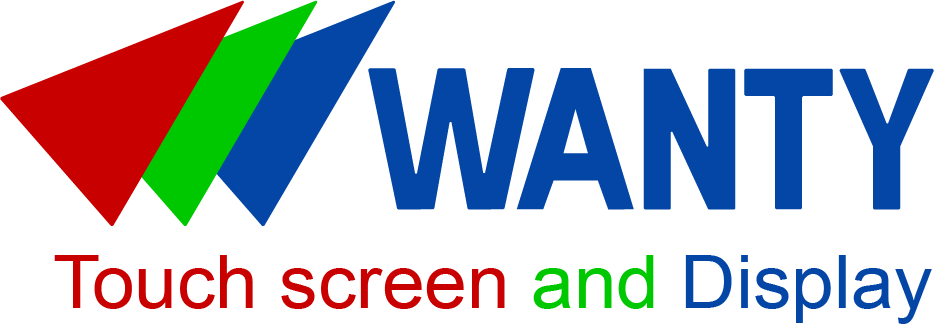High-Resolution Custom LCD: Tailored Displays for Your Project
News
Jun-22-2025
When your project demands sharp visuals and precise detail, a high-resolution custom LCD display can make all the difference. Standard screens may not fit your exact size, resolution, or performance needs, but custom LCD panels give you the freedom to tailor every aspect.
From vibrant colors to crystal-clear images, these tailored displays offer the clarity required for medical devices, industrial equipment, or advanced consumer products. Whether you need unique dimensions, enhanced brightness, or specialized interfaces, custom high-res LCDs deliver the flexibility and quality your project deserves.
If you want a display that stands out and performs reliably, understanding your options and working with the right supplier is key. This guide will walk you through the benefits, features, and selection tips for high-resolution custom LCD solutions.
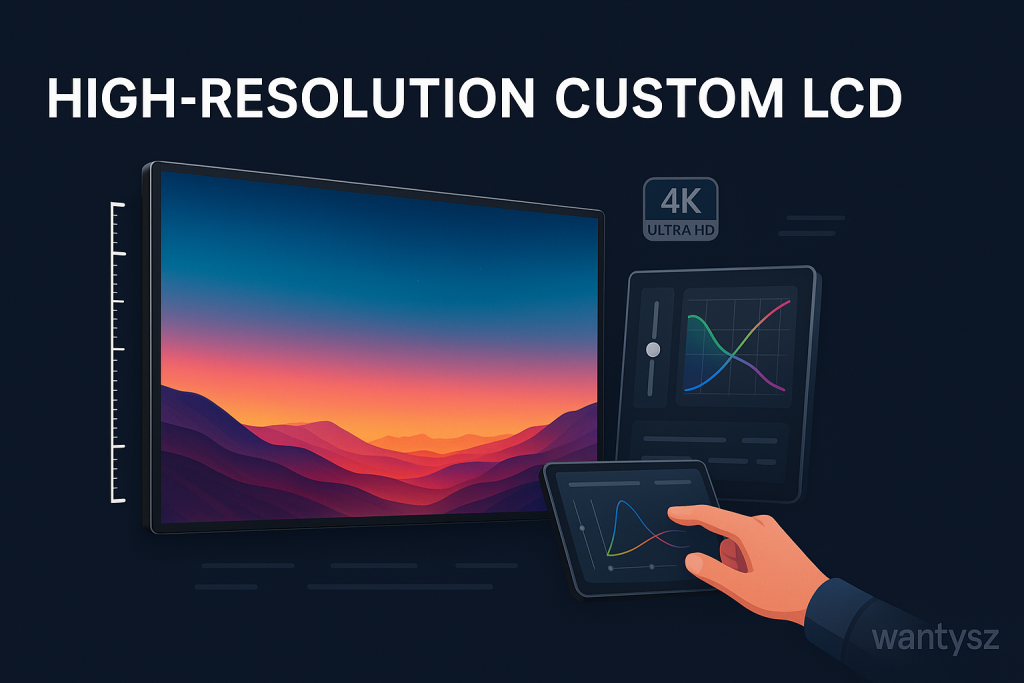
Understanding Resolution and Pixel Density
Resolution is the number of pixels that make up a high-resolution custom LCD screen, like 1920x1080 for Full HD. Pixel density, measured in pixels per inch (PPI), determines how sharp the image looks. Higher PPI means crisper visuals, like a smartphone screen showing tiny text clearly. For example, a medical monitor might need 300 PPI to display detailed scans. A custom high-res LCD display lets you choose resolution, like 4K for a large kiosk, to match your needs. Pixel density affects user experience by making images and text sharp. Manufacturers adjust resolution and PPI to balance clarity and cost, ensuring tailored LCD panels deliver vibrant visuals for devices like tablets or industrial displays.
LCD Technologies for High Resolution
High-resolution custom LCDs use different technologies to achieve sharp visuals. TFT (thin-film transistor) LCDs are common for their affordability and clarity, used in kiosks or POS systems. OLED screens offer deeper blacks and vibrant colors, ideal for smartphones or smartwatches. IPS (in-plane switching) LCDs provide wide viewing angles, perfect for medical monitors where multiple viewers need clear visuals. For example, a retail kiosk might use a TFT high-definition LCD for crisp menus. Each technology affects contrast ratio and brightness, impacting user interface quality. Manufacturers choose the right tech based on custom dimensions and application, ensuring tailored LCD panels meet user experience needs for clarity and performance across industries.
Customizing Screen Size and Aspect Ratio
A custom high-res LCD display lets you tailor screen dimensions and aspect ratio to fit your device. Sizes range from 3.5 inches for wearables to 55 inches for digital signage. Aspect ratios, like 16:9 for widescreen or 4:3 for traditional displays, affect how content appears. For instance, a car dashboard might use a 12-inch 16:9 tailored LCD panel for navigation. Custom sizes ensure a perfect fit, like a 15-inch screen for a retail kiosk. Aspect ratio choices enhance user experience by matching content layout. Manufacturers adjust resolution and pixel density to maintain clarity across sizes, ensuring high-definition LCDs deliver sharp visuals for your project’s specific needs.
Choosing the Right Backlight for Clarity
The backlight in a high-resolution custom LCD affects its brightness and visibility. LED backlights are common, offering energy efficiency and high brightness for clear visuals. For example, a kiosk in a bright mall needs a strong LED backlight to stay readable. CCFL (cold cathode fluorescent lamp) backlights are older but cheaper, used in budget displays. High-brightness LEDs, with 1000+ nits, suit outdoor screens, like an ATM display. The backlight impacts contrast ratio and optical clarity, enhancing user interface quality. Manufacturers tailor backlight strength to your environment, ensuring tailored LCD panels perform well in any lighting. Choosing the right backlight balances user experience and power consumption for custom high-res LCD displays.
Contrast Ratio and Color Accuracy in Custom LCDs
Contrast ratio measures the difference between a high-resolution custom LCD’s brightest white and darkest black, affecting image quality. A high contrast ratio, like 1000:1, makes colors pop, crucial for medical monitors showing X-rays. Color accuracy ensures true-to-life hues, vital for design tablets. For example, a retail signage screen needs accurate colors for vibrant ads. Manufacturers fine-tune contrast ratio and color accuracy to match project specs, ensuring optical clarity. These factors enhance user experience by making visuals sharp and realistic. Tailored LCD panels with high contrast ratios deliver clear images, even in bright environments, making them ideal for commercial applications like kiosks or dashboards.
Viewing Angles and Their Importance
Viewing angles determine how well a high-resolution custom LCD looks from different perspectives. Wide viewing angles, like 178 degrees in IPS screens, ensure clarity for multiple viewers, such as doctors sharing a medical monitor. Narrow angles, common in TFT LCDs, can distort colors off-center, less ideal for collaborative settings. For example, a museum touch table needs wide viewing angles for group use. Manufacturers customize viewing angles to match project specs, enhancing user interface quality. In custom high-res LCD displays, wide angles improve user experience by keeping visuals clear from any direction. Choosing the right viewing angle ensures tailored LCD panels perform well in shared or dynamic environments.
Touchscreen Integration with High-Resolution LCDs
High-resolution custom LCDs often integrate with touchscreens for interactive user interfaces. Capacitive touch custom screens add multi-touch capabilities, like swiping on a retail kiosk. For example, a gym treadmill’s high-definition LCD with touch lets users adjust speed easily. Manufacturers ensure touch accuracy aligns with high resolution for crisp, responsive visuals. Bezel integration creates a seamless look, like in a car dashboard. Touch integration enhances user experience by combining sharp displays with intuitive controls. Customized touch panels can include glove compatibility for industrial use. For more, see Capacitive touch custom screen. A tailored LCD panel with touch ensures optical clarity and functionality for commercial applications.
OLED vs TFT LCD for High-Resolution Displays
OLED and TFT LCDs are key options for high-resolution custom LCDs. TFT LCDs are affordable with good pixel density, used in kiosks or POS systems. For example, a smartphone might use an OLED high-definition LCD for stunning visuals, while a factory panel uses a TFT for cost savings. OLED has better contrast ratios but higher costs; TFT balances clarity and affordability. Manufacturers choose based on project specs and brightness needs. Both enhance user interface quality, but OLED excels in optical clarity. In custom high-res LCD displays, the choice depends on budget and application, ensuring user experience matches your device’s goals.
Brightness and Outdoor Visibility
Brightness is critical for high-resolution custom LCDs in bright environments. Measured in nits, high brightness (800–2000 nits) ensures optical clarity in sunlight, like an outdoor ATM screen. Anti-glare coatings reduce reflections, enhancing visibility. For example, a park kiosk’s tailored LCD panel needs 1000 nits to stay readable. Lower brightness suits indoor settings, like medical monitors. Manufacturers adjust backlight strength to match project specs, balancing contrast ratio and power use. In custom high-res LCD displays, high brightness improves user experience in challenging lighting. Sunlight readable screens ensure user interface clarity for commercial applications, making them ideal for outdoor or retail use.
Power Consumption Considerations
High-resolution custom LCDs vary in power use based on backlight and resolution. LED backlights in TFT LCDs use less power than CCFL, ideal for battery-powered devices like tablets. OLED screens consume less power for dark images but more for bright ones. For example, a smartwatch’s high-definition LCD needs low power to extend battery life. High resolution increases power demands, so manufacturers optimize pixel density for efficiency. Custom controller ICs reduce consumption in embedded systems. In custom high-res LCD displays, balancing brightness and power ensures user experience without draining devices. Manufacturers tailor project specs to minimize power use while maintaining optical clarity for commercial applications.
Custom Interface Options and Compatibility
Interface options in high-resolution custom LCDs ensure device compatibility. Common interfaces include HDMI for high-resolution video, MIPI for compact devices like wearables, or LVDS for industrial panels. For example, a kiosk’s tailored LCD panel might use HDMI for sharp visuals. Controller ICs must match the interface to ensure touch accuracy and user interface performance. Manufacturers customize interfaces to fit embedded systems, like a medical monitor syncing with diagnostic software. Compatibility with project specs reduces lag and errors. In custom high-res LCD displays, tailored interface options enhance user experience by ensuring seamless data transfer. For integration tips, see Touch display module, ensuring optical clarity for commercial applications.
Environmental Durability: Temperature, Moisture, Shock Resistance
High-resolution custom LCDs are built for tough environments. Temperature resistance ensures screens work in cold storage or hot factories, like a warehouse panel at -20°C. Moisture resistance with sealed edges protects against water, ideal for outdoor kiosks. Shock resistance guards against drops, crucial for handheld medical devices. For example, a tailored LCD panel in a construction site tablet resists dust and impacts. Manufacturers use rugged glass types and coatings to enhance durability. In custom high-res LCD displays, these features ensure optical clarity and user experience in industrial environments. Commercial applications like ATMs or factory displays rely on this rugged design for reliability.
Manufacturing Process for Custom LCDs
Creating a high-resolution custom LCD starts with your project specs. Manufacturers design a prototype, like a 15-inch kiosk screen, defining resolution and backlight. The glass type and controller IC are selected for optical clarity and touch accuracy. Prototypes undergo testing for contrast ratio and durability. Once approved, mass production uses automated lines to assemble custom high-res LCD displays. For example, a retail chain might order 1,000 POS screens after testing. The process takes 4–12 weeks, depending on lead time. ISO-certified capacitive touch screen suppliers ensure production quality. For supplier options, see Capacitive touch screen manufacturer. This process delivers tailored LCD panels for commercial applications.
Typical Applications for High-Resolution Custom LCDs
High-resolution custom LCDs power diverse industries. Retail kiosks use high-definition LCDs for clear menus and fast checkouts. Medical monitors display sharp X-rays with high pixel density. Automotive dashboards feature curved screens for navigation. Industrial panels need rugged designs for factory controls. For example, a museum touch table uses a 55-inch tailored LCD panel for interactive exhibits. Smart home devices, like thermostats, rely on compact custom high-res LCD displays for clear controls. These capacitive touch screen use cases enhance user experience across commercial applications. In custom high-res LCD displays, high resolution and contrast ratio ensure clarity.
Pricing Factors for Custom LCD Displays
High-resolution custom LCD costs range from $50–$5,000. Screen dimensions drive pricing: 7-inch screens cost $50–$300, while 21-inch ones hit $500–$2,000. Resolution (e.g., 4K) and backlight type (e.g., high-brightness LED) add $50–$500. MOQ affects unit prices: 100 units cost more than 1,000. Tooling for custom dimensions adds $1,000–$5,000. For example, a 15-inch kiosk high-definition LCD with anti-glare might cost $400. Certifications like ISO 9001 increase expenses. Budget for lead time and sample prototypes. Compare custom touch display prices with your capacitive touch screen supplier.
Lead Time and Production Challenges
Lead time for high-resolution custom LCDs varies by complexity. Standard screens take 2–6 weeks; custom high-res LCD displays need 6–12 weeks due to tailored project specs. Challenges include sourcing high-quality glass types or calibrating controller ICs for pixel density. For example, a curved automotive screen might face delays due to unique custom dimensions. Manufacturers mitigate this with automated production and testing. MOQ impacts lead time: smaller orders are faster but pricier. In custom high-res LCD displays, clear communication with capacitive touch screen suppliers ensures timely delivery. Plan lead time to meet deadlines for commercial applications, ensuring optical clarity and user experience without delays.
Quality Control and Testing Procedures
Quality control for high-resolution custom LCDs ensures performance. Manufacturers test pixel density for sharp visuals, like a medical monitor showing clear scans. Contrast ratio checks ensure vibrant colors, critical for retail signage. Environmental tests verify durability against heat, moisture, or shocks, like in factory panels. Touch accuracy is tested if integrated with capacitive touch custom screens. For example, a kiosk screen undergoes brightness tests for sunlight readable performance. Certifications like ISO 9001 guarantee production quality. In custom high-res LCD displays, rigorous testing ensures user interface reliability for commercial applications. Request test reports from your capacitive touch screen supplier to confirm optical clarity.
Installation and Mounting Solutions
Installing high-resolution custom LCDs requires precision. Use mounting hardware like VESA mounts for secure bezel integration, ensuring enclosure compatibility. For example, a retail kiosk’s tailored LCD panel needs a flush mount for a sleek user interface. Secure wiring with shielded cables to avoid interference, especially in industrial environments. Calibrate touch accuracy if using a touch display module. Test brightness and contrast ratio in real conditions, like bright sunlight, for outdoor screens. Proper touch screen installation solutions ensure durability and user experience. A capacitive touch screen supplier can assist with installation for custom high-res LCDs.
Future Trends in High-Resolution Custom LCD Technology
High-resolution custom LCDs are evolving with new tech. Flexible OLED screens enable curved custom high-res LCD displays for wearables. AI integration enhances user interfaces by predicting inputs, like in smart kiosks. Haptic feedback adds tactile responses for better user experience. Sunlight readable displays with advanced backlights improve visibility. For example, a future car dashboard might use a flexible high-definition LCD with AI-driven menus. Edge computing reduces lag in embedded systems, boosting touch accuracy. In custom high-res LCD displays, these trends drive innovation, ensuring optical clarity and contrast ratio for commercial applications like retail, healthcare, and automotive.
Frequently Asked Questions About High-Resolution Custom LCDs
What defines a high-resolution LCD?
A high-resolution custom LCD has a high pixel count, like 1920x1080 (Full HD) or 4K (3840x2160), for sharp visuals. Pixel density, measured in PPI, determines clarity—higher PPI means crisper images, like text on a smartphone. For example, a medical monitor might use 300 PPI for detailed scans. These screens, often TFT or OLED, offer vibrant contrast ratios and wide viewing angles. Manufacturers tailor resolution to project specs, ensuring optical clarity for user experience. In custom high-res LCD displays, high resolution enhances readability in commercial applications like kiosks or dashboards, making them ideal for precise, vibrant visuals.
How is pixel density measured in LCDs?
Pixel density in high-resolution custom LCDs is measured in pixels per inch (PPI), counting pixels in a square inch. Higher PPI, like 300 on a tablet, means sharper images. For example, a 10-inch screen with 1920x1200 resolution has higher PPI than a 15-inch screen with the same resolution. Pixel density affects optical clarity, critical for medical or retail displays. Manufacturers adjust PPI based on screen dimensions and project specs. In custom high-res LCD displays, high pixel density ensures clear text and images, enhancing user interface quality for commercial applications like POS systems or smartwatches.
What is the difference between TFT and OLED screens?
TFT (thin-film transistor) LCDs and OLED screens differ in high-resolution custom LCDs. TFT LCDs use a backlight for affordable, clear visuals, common in kiosks. OLED screens emit their own light, offering deeper blacks and vibrant contrast ratios, ideal for smartphones. For example, a TFT tailored LCD panel might power a retail display, while an OLED high-definition LCD suits a curved smartwatch. TFT is cost-effective but less vibrant; OLED excels in optical clarity but costs more. Both enhance user experience, but the choice depends on project specs and budget for commercial applications.
Can I customize the size of an LCD?
Yes, high-resolution custom LCDs can be tailored to any screen dimensions. Sizes range from 3.5 inches for wearables to 55 inches for kiosks. Manufacturers adjust custom dimensions to fit devices, like a 12-inch tailored LCD panel for a car dashboard. Aspect ratios (e.g., 16:9) and resolution are customized for optical clarity. For example, a retail kiosk might need a 15-inch high-definition LCD for sharp menus. Customization ensures user interface compatibility and user experience. Work with a capacitive touch screen supplier to meet project specs.
How does backlight type affect screen quality?
The backlight in a high-resolution custom LCD impacts brightness and contrast ratio. LED backlights offer high brightness (e.g., 1000 nits) and energy efficiency, ideal for sunlight readable kiosks. CCFL backlights are cheaper but less bright, used in budget displays. For example, an outdoor ATM needs a strong LED backlight for optical clarity. Backlight type affects user experience by ensuring readability in various lighting. Manufacturers tailor backlight strength to project specs, balancing power use and user interface quality. In custom high-res LCD displays, choosing the right backlight enhances commercial applications like retail or medical displays.
What is contrast ratio, and why does it matter?
Contrast ratio in a high-resolution custom LCD measures the difference between the brightest white and darkest black, like 1000:1. A high contrast ratio makes images vivid, crucial for medical monitors showing scans. For example, a retail signage tailored LCD panel with strong contrast ratio displays vibrant ads. It affects optical clarity and user experience, ensuring clear visuals. Manufacturers adjust contrast ratio to match project specs, enhancing user interface quality. In custom high-res LCD displays, high contrast ratios are vital for commercial applications like kiosks or dashboards, where readability and color accuracy matter most.
Related Topics
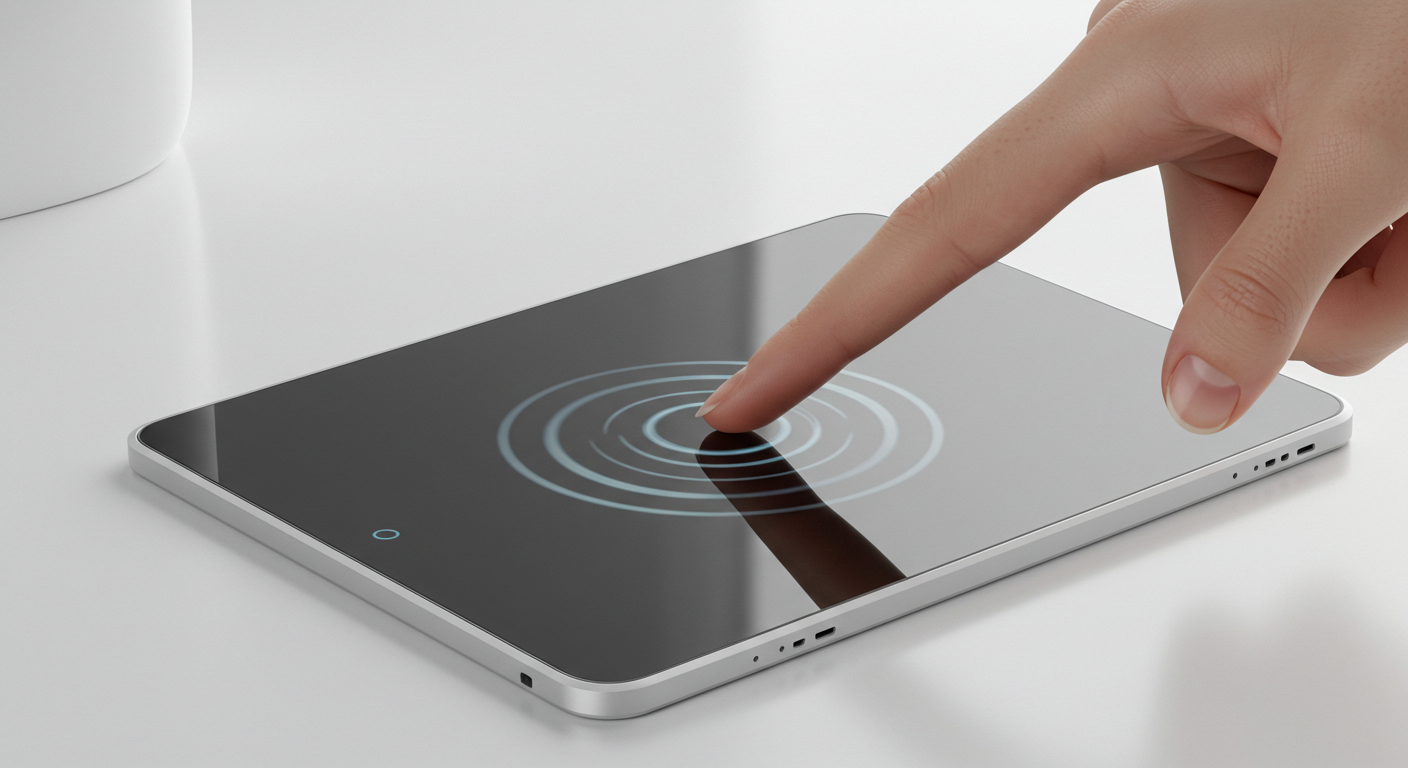
Capacitive Touch Integrated Touchscreen: 2025 Technology
Aug-25-2025
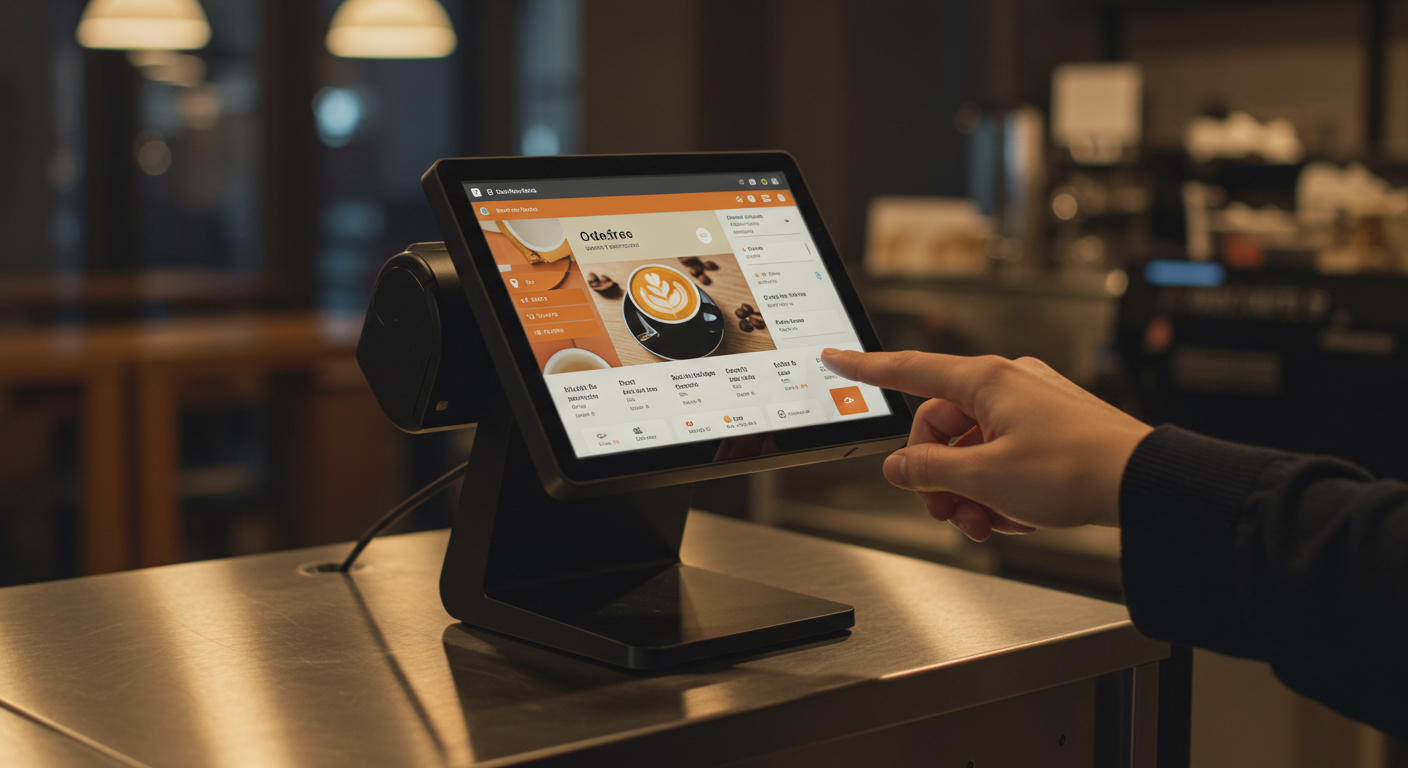
Capacitive Touch Screen POS Terminal – Next-Gen Solutions
Aug-25-2025

Capacitive Touch HMI Interface | Durable & Ergonomic Control
Aug-24-2025
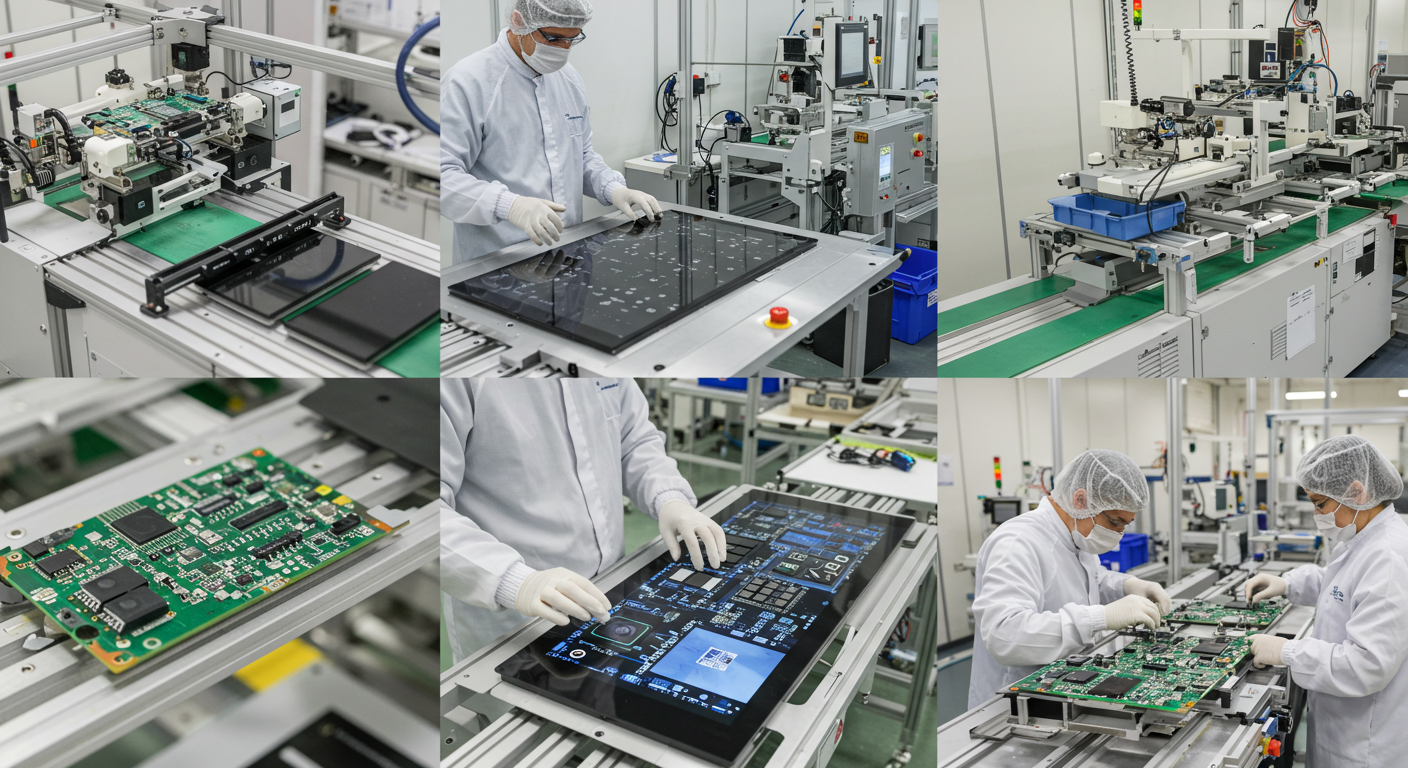
Capacitive Panel OEM Manufacturers – Custom Touchscreen Solutions
Aug-24-2025
Get a Free Quote
✔ 16 Years Manufacture Service ★★★★★
✔ 3 Technical Experts And 52+ Project Engineers Will Assiste You
✔ Wanty Employs Over 52 Engineers, Many Of Whom Come From Leading Tft Lcd Module Companies Such As Tianma And Boe-Varitronix. Each Core Team Member Brings 15 Years Of Industry Experience.
✔ If you would like more information about our products and services, please contact us. Whether you need a standard solution or a customized one, we are here to meet your needs.
✔ Please complete the form below, and the selected location will contact you promptly. Thank you for visiting, and have a great day!
